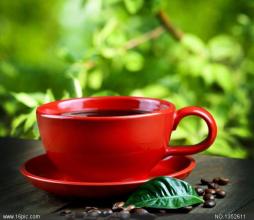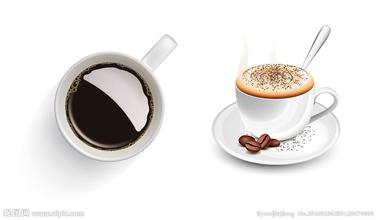Characteristics of Cochel Manor Coffee Flavor Manor in Yega Xuefei Coffee producing area of Ethiopia
, planting system and environment
The cool and foggy mountain stream village in the Yega-Xuefei producing area is like spring all year round, with a gentle breeze in summer, cool but not hot, rain but not damp, and no cold damage in winter, making it the best environment for planting Arabica. There are no large coffee plantations. Coffee farmers mix coffee with other crops, usually under banana trees, to form a unique landscape flavor.
Washed Yega Chuefei has a unique lemon flavor, refreshing jasmine flavor, as well as soft fruit acid and citrus flavor, fresh and bright taste.
Sunburn Yega Chuefei has charming sour fruit, clean fermented fruit sweet, elegant fruit wine aroma, sweet aftertaste since 2006, some coffee processing plants in some production areas have adopted exquisite elevated greenhouse tanning method, this kind of high-intensity human labor greenhouse drying method, cut off coffee fruit contact with the ground, prevent the process of sun exposure to produce soil flavor, creating an extremely clean fruit flavor. After more than two weeks of sun exposure, dark brown coffee fruits are professionally stored, waiting for the whole flavor to ripen. Before sale, the dried cherry pulp and sheepskin are removed, and then the unripe beans and over-fermented beans are removed. Strict control greatly improves the quality of sun-dried beans.
The traditional way of tanning in Ethiopia is rough and smelly, which has been criticized by people. In 1959, the South American water washing method was introduced into the Yega Xuefei producing area. Most producing areas generally use water washing treatment, that is, after the coffee fruit is peeled, the pectin layer is removed after the process of fermentation and washing. The grading system of drying Ethiopian coffee is not distinguished by the number of eyes, but according to the proportion of defective beans in raw beans. In October 2009, Ethiopia launched the ECX boutique coffee trading classification system, and Q-Grader rated raw beans as follows:
Washed Yega Chuefei is divided into two grades: Grade 1 and Grade 2.
Grade 1, Grade 3, Grade 4 and Grade 5 were divided into sun Yega Xuefei.
Grade 1 is the highest grade, that is, the lowest defect rate, the best quality Yega Sheffield Erika G1, with more lively citrus citric acid, apricot blossom aroma, walnut explosion aroma, and some subtle cinnamon, clove, rosemary and other spices, taste with a very good honey brown sugar sweet, very soft and attractive It is as if the whole body is soaked in the sea in early autumn, slapped by the warm and cool sea, full of impact and stretching tenderness. What is even better is the tail rhyme, which will be filled with a sweet and sour sense of fruit and tea, like colorful bubbles. In such a reverie, Maoye seems to have returned to the era of first love, the era of carefree efforts to love.
Many people must want to know the difference between the Ariga G1 and the Blue Nile G1. Master Cat, let's briefly introduce the two Yega Xuefei. The biggest difference is that Ariga G1 belongs to the sun treatment, while the Blue Nile G1 belongs to the washing treatment. As we all know, Yejia Xuefei is actually more common to use the traditional washing method to show her beautiful taste. Yega Xuefei treated with water washing has a clean and light taste, with a very strong aroma of jasmine and citrus citric acid. In the ancient saying, Yirga means "settle down", while Cheffe refers to "wetland". From such place names, it can be seen that Yega Xuefei is one of the areas with the highest water content in Ethiopia, so most of the coffee produced in Yega Xuefei is washed. Yega, on the other hand, is relatively rare in sun treatment, and it has gradually come to the fore with the diversified development of boutique coffee in recent years. This sun-treated Yeruifei Ariga G1 means that it will have richer ripe fruit flavor than water-washed beans, sweeter floral aromas and stronger layers.

Important Notice :
前街咖啡 FrontStreet Coffee has moved to new addredd:
FrontStreet Coffee Address: 315,Donghua East Road,GuangZhou
Tel:020 38364473
- Prev

Introduction to the characteristics of the flavor and taste manor in the coffee producing area of Xidamo Shaqisuo, which is longer in Huigan.
Gima, which accounts for about 50 per cent of Ethiopia's annual output, grows between 4400 and 6000 feet above sea level in the country's southwestern highlands (the border between Kaffa and Illubabor provinces) and is usually exported to G5/G4. However, in recent years, about 10% or 20% of Gima has been used to make up for the lack of taste of coffee, but its quality has gradually declined to its own level, but for the purchase of
- Next

Flavor and taste characteristics of Panamanian Coffee Manor Ireta Manor introduces Panamanian coffee beans
Hartman's story, like his coffee, is legendary. Hartman Manor is located in Chilidge, Santa Clara. The founder's name is Ellis Strauss Hartman. He was born on June 20, 1891 in the Moravilla region of Austria and Hungary in what is now the Czech Republic, and died on May 25, 1970 at the age of 78. Today's Hartman Manor is a
Related
- Does Rose Summer choose Blue, Green or Red? Detailed explanation of Rose Summer Coffee plots and Classification in Panamanian Jade Manor
- What is the difference between the origin, producing area, processing plant, cooperative and manor of coffee beans?
- How fine does the espresso powder fit? how to grind the espresso?
- Sca coffee roasting degree color card coffee roasting degree 8 roasting color values what do you mean?
- The practice of lattes: how to make lattes at home
- Introduction to Indonesian Fine Coffee beans-- Java Coffee producing area of Indonesian Arabica Coffee
- How much will the flavor of light and medium roasted rose summer be expressed? What baking level is rose summer suitable for?
- Introduction to the characteristics of washing, sun-drying or wet-planing coffee commonly used in Mantenin, Indonesia
- Price characteristics of Arabica Coffee Bean Starbucks introduction to Manning Coffee Bean Taste producing area Variety Manor
- What is the authentic Yega flavor? What are the flavor characteristics of the really excellent Yejasuffi coffee beans?

